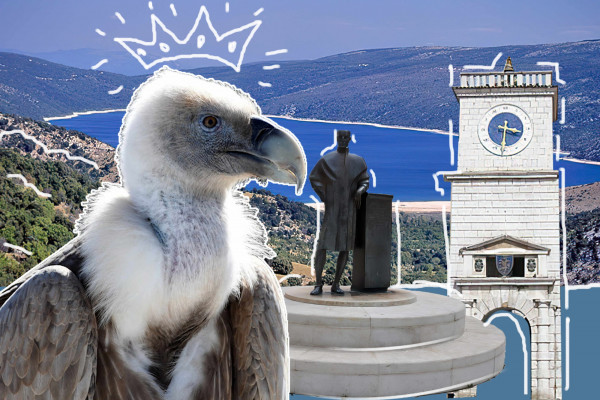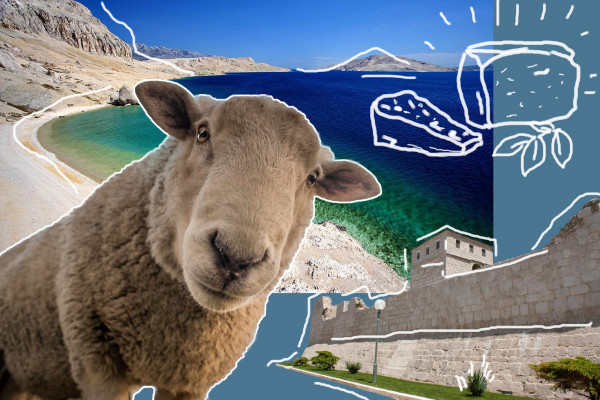Show all photos
A Guide for a One Day Trip to Pula
Pula is one of the most popular tourist destinations on the Croatian coast and the largest city on the Istrian peninsula. It is best known for its many well-preserved architectural and other monuments from the Roman era when it was called Pola. In addition to Roman heritage, Pula offers many other attractions as well as enjoyment of Istrian gastronomic delicacies and wine. What is the best way to spend a day in Pula? Read below.
1. Arena - The most famous and significant monument, the building from which each tour of the city begins and ends - Pula Arena, the building where gladiator fights were held. It was built in the 1st century, during the reign of Emperor Vespasian. Today, the Pula amphitheater organizes many cultural and educational events, including Roman historical shows with actors and music concerts.
2. Forum - Pula's Roman Forum has been the central town square since the time of the Roman colony of Pola. It has changed over time, and only the Temple of Augustus testifies to its ancient period. In Roman times, the forum was the main place of the social life of the city.
3. House of Istrian Olive Oil - As the olive is a symbol of the Mediterranean, its cultivation has been very common in Istria since time immemorial. Therefore, it is not surprising that Pula has a museum dedicated to olives and olive oil. In the museum, you can find out how oil used to be processed and obtained throughout history, but you also have the opportunity to try and taste the best Istrian oils.
4. Church of Our Lady of the Sea - During the Austro-Hungarian Monarchy at the end of the 19th century, Pula housed many members of its navy, so a naval church was built in the then main seaport. Today it is the main parish for the local population, and it is accompanied by the legend that due to the change of three architects, Emperor Francis Joseph scratched the marble to check whether the church was built of gold, given that he financed it.
5. History and Maritime Museum of Istria - The History Museum of Istria holds over 50,000 items, from weapons throughout history to uniforms and military equipment, flags, relics and cannons. The naval part is also represented by exhibits of naval warfare, objects from former shipyards and equipment.
6. Cathedral of the Assumption of the Blessed Virgin Mary - Pula Cathedral was built on the site where Christian believers gathered at the time of the persecution of Christians. The church was rebuilt over the centuries, and today's form was created by rebuilding it in the 17th century. The church houses the relics of five saints housed in five sarcophagi.
7. Waterfront - Pula's waterfront stretches down St. Peter's Street, along the southeastern coast of the Bay of Pula. This is a place to socialize and meet, especially for the locals. The waterfront offers a beautiful view of the Colosseum and the harbor. In the immediate vicinity, there are many green parks, which are also ideal places for rest and socializing.
8. Zerostrasse - Below Pula is an underground world made up of tunnels that stretches through almost the entire Pula. This network has four entrances and is called Zerostrasse. Zerostrasse was created during the First World War to shelter people in the event of airstrikes on the city. Today, various events and exhibitions are organized in the tunnels.
9. Hook & Cook - In this modern street food restaurant you will enjoy dishes made from the best fresh seafood and fish procured by a local fisherman. Here you can taste local traditional flavors prepared in a modern and innovative way every day. Especially popular are tuna tacos, Fritto Misto and tuna steak burger available to guests every day at affordable prices and with great ambiance.
Guide Type
Most popular
Itinerary
Place 1
Arena
Place 1
Arena
The most famous and significant monument, the building from which each tour of the city begins and ends - Pula Arena, the building where gladiator fights were held. It was built in the 1st century, during the reign of Emperor Vespasian. Today, the Pula amphitheater organizes many cultural and educational events, including Roman historical shows with actors and music concerts.
Place 2
Forum
Place 2
Forum
Pula's Roman Forum has been the central town square since the time of the Roman colony of Pola. It has changed over time, and only the Temple of Augustus testifies to its ancient period. In Roman times, the forum was the main place of the social life of the city.
Place 3
House of Istrian Olive Oil
Place 3
House of Istrian Olive Oil
As the olive is a symbol of the Mediterranean, its cultivation has been very common in Istria since time immemorial. Therefore, it is not surprising that Pula has a museum dedicated to olives and olive oil. In the museum, you can find out how oil used to be processed and obtained throughout history, but you also have the opportunity to try and taste the best Istrian oils.
Place 4
Church of Our Lady of the Sea
Place 4
Church of Our Lady of the Sea
During the Austro-Hungarian Monarchy at the end of the 19th century, Pula housed many members of its navy, so a naval church was built in the then main seaport. Today it is the main parish for the local population, and it is accompanied by the legend that due to the change of three architects, Emperor Francis Joseph scratched the marble to check whether the church was built of gold, given that he financed it.
Place 5
History and Maritime Museum of Istria
Place 5
History and Maritime Museum of Istria
The History Museum of Istria holds over 50,000 items, from weapons throughout history to uniforms and military equipment, flags, relics and cannons. The naval part is also represented by exhibits of naval warfare, objects from former shipyards and equipment.
Place 6
Cathedral of the Assumption of the Blessed Virgin Mary
Place 6
Cathedral of the Assumption of the Blessed Virgin Mary
Pula Cathedral was built on the site where Christian believers gathered at the time of the persecution of Christians. The church was rebuilt over the centuries, and today's form was created by rebuilding it in the 17th century. The church houses the relics of five saints housed in five sarcophagi.
Place 7
Waterfront
Place 7
Waterfront
Pula's waterfront stretches down St. Peter's Street, along the southeastern coast of the Bay of Pula. This is a place to socialize and meet, especially for the locals. The waterfront offers a beautiful view of the Colosseum and the harbor. In the immediate vicinity, there are many green parks, which are also ideal places for rest and socializing.
Place 8
Zerostrasse
Place 8
Zerostrasse
Below Pula is an underground world made up of tunnels that stretches through almost the entire Pula. This network has four entrances and is called Zerostrasse. Zerostrasse was created during the First World War to shelter people in the event of airstrikes on the city. Today, various events and exhibitions are organized in the tunnels.
Place 9
Hook & Cook
Place 9
Hook & Cook
In this modern street food restaurant you will enjoy dishes made from the best fresh seafood and fish procured by a local fisherman. Here you can taste local traditional flavors prepared in a modern and innovative way every day. Especially popular are tuna tacos, Fritto Misto and tuna steak burger available to guests every day at affordable prices and with great ambiance.
Guide Location
Traveler type
All types of travelers
Reviews
4.5/5
Excellent
Based on
18 reviews
Excellent
9
Very Good
9
Average
0
Poor
0
Terrible
0
Angela
08/12/2021
The guide from Pula was very helpful in finding the best restaurants and sights in this beautiful Croatian town. After being tired from a long day of walking around the Roman ruins in Pula, I stopped at Hooks and Cooks for their great menu, friendly service, and wonderful view of the nearby Sea Organ. The musical instrument made from marble slabs which are submerged into the water’s edge is a must see!
Ron
30/11/2021
Through the guide, I was able to discover how interesting and fascinating Pula is. The guide had a lot of tourist locations within Pula. I visited most of them and my day in Pula was amazing thanks to the guide.
Carlijin
27/11/2021
The guide was accurate about the House of Istrian Olive Oil. We had the chance to learn how oil used to be obtained and processed throughout history. We also had the privilege to taste best Istrian oils here.
Pauline
18/11/2021
The guide gives a detailed history of how the church of Our Lady of the Sea came into existence and its purpose. The church was meant to house members of the navy. The construction was funded by Emperor Francis Joseph. I enjoyed attending the mass in this location. I will visit again.
Mikael
04/11/2021
This historical site was great. The guide was very informative and knowledgeable. The Forum itself is amazing--with columns, statues and a beautiful view of the city. Must see for history buffs!
Elsi
15/10/2021
My family and i visited Pula with the help of a one day guide. The locals were very friendly and we had a great time interacting with them. We had a chance to visit the House of Istrian Olive Oil and Hook & Cook.
Dori
13/10/2021
The guide gave me the best way to enjoy my stay at Pula by suggesting to me the things to do during my one day trip. I had the opportunity to tour the Zerostrasse which is an underworld with tunnels that are full of life. Am glad to have set my eyes on the exhibitions in the tunnel.
Showing 8 - 14 of 18 total













